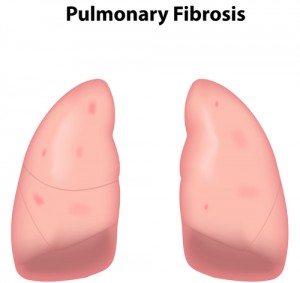 In a multisite study conducted in Switzerland, entitled “The secretome of induced pluripotent stem cells reduces lung fibrosis in part by hepatocyte growth factor,” published yesterday in the Journal Stem Cell Research & Therapy, a team of researchers, Amiq Gazdhar and colleagues, sought to evaluate the potential of induced pluripotent stem cells (iPSC) conditioned media (iPSC-cm) to regenerate and repair the alveolar epithelium in vitro and improve bleomycin induced lung injury in vivo.
In a multisite study conducted in Switzerland, entitled “The secretome of induced pluripotent stem cells reduces lung fibrosis in part by hepatocyte growth factor,” published yesterday in the Journal Stem Cell Research & Therapy, a team of researchers, Amiq Gazdhar and colleagues, sought to evaluate the potential of induced pluripotent stem cells (iPSC) conditioned media (iPSC-cm) to regenerate and repair the alveolar epithelium in vitro and improve bleomycin induced lung injury in vivo.
Idiopathic pulmonary fibrosis (IPF) is a disease in which tissue deep in the lungs becomes thick and stiff, or scarred over time. The formation of scar tissue is called fibrosis. IPF is characterized by a chronic progressive scaring in the lung mainly due to improper alveolar wound healing and failure of the alveolar epithelium to reepithelialise in response to epithelial injury. Many people live only about 3 to 5 years after diagnosis. The most common cause of death related to IPF is respiratory failure. Other causes of death include pulmonary hypertension, heart failure, pulmonary embolism, pneumonia, and lung cancer. Currently there is no treatment to reverse lung damage and induce alveolar epithelial regeneration, as the majority of treatment methods were developed to slow the progression of the disease using anti-inflammatory or antifibrotic agents, although with minor success.
However, recently, cell based approaches have been proposed as new possibilities to regenerate various organs, including the fibrotic lung. The generation of human induced pluripotent stem cells (iPSC) has opened up a new avenue for patient-specific cell based therapies.
One of the possibilities is the use of cell-conditioned media obtained from stem cells, since released factors from stem cells normally induce biological responses similar to the cells when tested in vitro or in vivo. However, the characteristics of the iPSC conditioned media (iPSC-cm), including the analysis of the iPSC-cm secretome and its potential benefits have not yet been identified in detail.
[adrotate group=”7″]
Researchers have used human foreskin fibroblasts (from ATCC, line CRL-2429) to generate iPSC as described [21,22]. After expansion, 5×104 human fibroblasts were infected with 5 MOI of pSin-EF2-Nanog-Pur. The cells were puromycin-treated for 5 days and then re-transduced with three viruses: pSin-EF2-Sox2-Pur, pSin-EF2-Oct4-Pur and pSin-EF2-Lin28-Pur (MOI 5). iPSC were maintained on irradiated human foreskin fibroblasts (CCD1, obtained from ATCC, USA) in KO DMEM supplemented with 20% serum Replacement, 2 mmol/L Glutamax, 40 µg/ml gentamycin and 100 µmol/L βmercaptoethanol (all Gibco, USA) in presence of 100 ng/ml β-FGF (Peprotech, USA) and were passaged mechanically every 2-3 days.
In this study, researchers showed that conditioned media obtained from iPSC improved alveolar epithelial repair in vitro and attenuated bleomycin induced lung injury and fibrosis in vivo, partially by a HGF dependent mechanisms. The authors concluded that IPSC-cm has therapeutic potential in lung fibrosis and may offer a promising novel option for patients suffering from pulmonary fibrosis, taking advantage of a novel cell-based, yet cell-free therapeutic approach that uses the generation of iPSC.

